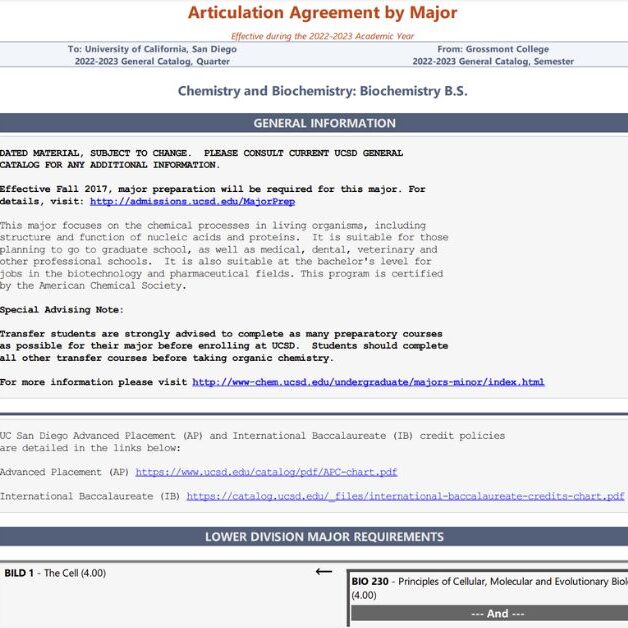Transfer students are an important part of the university experience and offer many benefits to campuses. They can enrich all students’ academic experience, help create a more diverse and inclusive campus community, and make the transition from one university to another smoother. Universities should welcome transfer students with open arms, and there are several things that can be done to make their transition as smooth as possible.
1. The Benefits of Having Transfer Students on Campus
When most people think of college, they imagine 18-year-olds fresh out of high school, embarking on a new adventure. But what about the students who don’t fit that description? What about the students who are already in their twenties or older? These students are often called transfer students, and they play an important role on college campuses.

Transfer Student Have Already Demonstrated Student Success
One of the greatest benefits transfer students offer is their experience and background. Because they’ve already been in college before, transfer students have demonstrated academic success, making them valuable to any campus community.
For years now, administrators in higher education have been saying that student success is a top priority. However, the pressure to actually improve success rates has increased.
Out of all students, those who transfer from community colleges – especially if they already have an associate’s degree – are more likely to persevere and graduate than students who originally started at a four-year institution.
A recent study found that students who transfer from a community college to a four-year university are more likely to graduate than those who start at a four-year institution.
When transfer completion rates are high, it means that the university is doing a great job of helping students succeed.
2. How Transfer Students can Enrich the Academic Experience for All Students
Transfer students can provide a valuable perspective in the classroom. They come from a variety of backgrounds and have often experienced different teaching styles and methods. As a result, they can offer their fellow students new insights and ways of thinking about the material.
In addition, transfer students often feel more comfortable speaking up in class and asking questions. This can create a more interactive and engaging learning environment for all students.
Finally, transfer students can act as a resource for their classmates, providing information about campus life and resources.
Overall, transfer students can enrich the academic experience for all students by bringing diverse perspectives and experiences to the classroom.
3. How Transfer Students Help to Create a More Diverse and Inclusive Campus Community
As America becomes increasingly diverse, more and more students are choosing to transfer to four-year colleges and universities.
According to a recent report, almost one-third of all students who enroll in college will eventually transfer to another institution. This trend is especially pronounced among students of color.
Increased Campus Diversity
Another notable benefit of transfer students is the way they impact campus diversity. Universities often attract many different types of people, and having transfer students on campus can help foster this inclusivity even further.
Although four-year institutions have always strived for diversity and accessibility, recent demographic trends show that community colleges might start seeing more students.

For many students of color, community colleges are a more affordable and accessible option than four-year universities. As a result, they often make up a significant portion of the transfer student population.
For example, African American and Hispanic students are more likely to attend a two-year institution than other racial and ethnic groups. By enrolling at a community college first, these students can help to create a more diverse and inclusive campus community.
“When you look at who starts at a two-year school and completes with a bachelor’s degree, there’s a big gap between white and Asian and Hispanic and Black … we’re probably losing quite a bit of diversity in higher education in these spaces between schools.”Mikyung Ryu, the clearinghouse’s director of research publications
Mikyung Ryu National Student Clearinghouse Research Center Director of Research Publications
In addition to increasing the overall diversity of the student body, transfer students can also bring new perspectives and experiences to their new school. By valuing the contributions of all students, colleges and universities can create a more diverse and inclusive environment for everyone.
To achieve equal access to four-year education opportunities for all student segments, universities may need to increase their investments in community college transfer programs.
4. Why Universities Should Welcome Transfer Students With Open Arms
College can be an expensive investment, and for many students, the choice of which school to attend is largely based on cost. As a result, many students will start their college career at a community college before transferring to a four-year university.
While some universities may view transfer students as a burden, they actually offer many benefits.
First of all, transfer students are usually more mature and focused than traditional first-year students. They have already been through the experience of adjusting to college life and are more likely to be successful in their classes.
In addition, transfer students add diversity to the campus community and can offer unique perspectives.
Finally, universities that welcome transfer students are more likely to see an increase in applications and overall enrollment. Given these benefits, it’s clear that universities should open their doors to transfer students.
5. How to Make the Transition From One University to Another as Smooth as Possible
The transition to a university can be daunting for students attending community colleges.
Four million community college students that intend to transfer to four-year institutions fall out of the transfer pipeline each year. This number is particularly troubling in light of recent, pervasive institutional struggles to meet enrollment and net tuition revenue goals.
There are a number of factors to consider, from the difference in class size to the increased workload. However, there are a few things that community colleges and universities can do to make the transition as smooth as possible.
First, they can offer transitional programs that help students acclimate to the new environment. These programs can include anything from academic support to social activities.
Second, they can provide financial assistance to students who need it. This could take the form of scholarships, grants, or even work-study programs.
Finally, they can offer advice and guidance to students who are unsure about what they want to study or where they want to transfer.
Community colleges and universities can help students make a successful transition to the next level of their education by taking these steps.
6. Tips for Transferring Credits and Avoiding Common Mistakes
When transferring credits, it is important to be aware of each college or university’s different policies and procedures. There are also a few common mistakes that students make when transferring credits. In order to avoid these mistakes, it is helpful to be familiar with the basics of transferring credits.
Refrain From Switching Majors
One common mistake community college students make is switching majors. This can often lead to delays in graduation or transferring and can also lead to loss of credits. It is important to be sure that you are switching majors for the right reasons and understand the implications of switching majors.
Transfer students should not switch majors, especially if they have declared a STEM or highly impacted discipline, as it jeopardizes their ability to transfer in two years. Declaring a major early on, or having a good idea of what you want to study, is important to complete the necessary classes for major preparation.
If you switch majors during your time at community college, you will need to check that the classes you are enrolled in meet the requirements for the new major.
Remember, just because you need a class doesn’t mean you will be able to enroll in one.
Classes fill up quickly, and many students can’t find a seat in a class they need to transfer and end up having to dual enroll at another community college or reevaluate their timeline of transferring in two years.
View Our Article On The Top 5 QUESTIONS YOU MUST CONSIDER BEFORE CHANGING MAJORS
Understanding Course Articulation
Another mistake students make is not verifying that courses taken at other schools will satisfy degree requirements. It is important to understand how course articulation works and to verify that transferred courses will meet degree requirements. The better you understand course articulation; the easier transferring will be because it is the foundation on which all transfer agreements (articulation agreements) are based.
The very ability of a student to transfer from a community college to a university is due to the formal agreement created by the community college and transfer partner institution.
Course articulation is a complicated process, but California Community College students can utilize a resource known as ASSIST to identify general education and major-specific articulation agreements.

In addition, when you understand course articulation, you save yourself money because you do not need to retake courses you have already taken. This is a key benefit of transferring credits and avoiding common mistakes when transferring.
To avoid common mistakes when transferring credits, it is important to understand how course articulation works and to verify that your transferred courses meet degree requirements.
You can use ASSIST to find articulation agreements that lay out, in black and white, the courses you need to take in order to transfer or the classes the institution will count for college transferable credit.
Watch Out for Prerequisites
Another common mistake is that students fail to consider the prerequisites for required major preparation courses. Most institutions, especially the University of California (UC) system, have general unit requirements and major necessities.
The latter is where many students mess up because even though they have the 60 units needed to transfer, they cannot submit an application because they could not enroll in a required major course due to the need for a prerequisite course to be completed beforehand.
Recommended Reading: When Do UC Decisions Come Out?
For example, if you are trying to transfer into an engineering major at a college or university, you will need to have completed math and science courses before applying. These may include calculus, physics, and chemistry.
If you do not meet these prerequisites, it is likely that your application for transfer will be denied because you will not reach the upper-division classes that are required for your major.

All of this advice is predicated on the idea that a student is interested in transferring from a community college to a university in two years. Suppose you have no intention of transferring in two years. In that case, you can lower the number of units you take per semester (although it is recommended never to go below 12 units because anything below 12 units removes a student’s full-time status).
By understanding the basics of transferring credits, you can avoid common mistakes and ensure a smooth transfer process.
Read More About How to Transfer From Community College in One Year
Conclusion
Transfer students are important to the university experience because they bring new perspectives and life experiences to the campus. They can also support first-year students as they adjust to college life. In addition, transfer students can help to create a more diverse and inclusive campus community.





